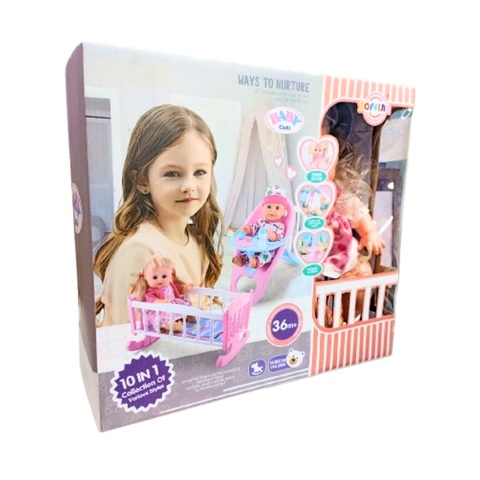
Playing with dolls and figurines is a timeless childhood activity that offers numerous developmental benefits while fostering creativity, imagination, and social skills. Whether your child prefers nurturing a baby doll or embarking on epic adventures with action figures, these toys provide rich opportunities for exploration and learning. Here’s a closer look at the benefits of playing with dolls and figurines, along with some inspiring play ideas to enrich your child's playtime.
The Benefits

Imaginative Play: Dolls and figurines encourage children to create imaginary worlds, stories, and scenarios. Through role-playing, children can explore different roles, emotions, and relationships, which enhances their creativity and narrative skills.
Emotional Development: Playing with dolls allows children to practice nurturing and empathy as they care for their "babies" or interact with figurines in various social contexts. This role-playing helps children develop emotional intelligence and understanding of others' feelings.
Language and Communication Skills: Doll play often involves dialogue and storytelling, which promotes language development and communication skills. Children articulate thoughts, feelings, and scenarios, expanding their vocabulary and expressive abilities.
Social Skills and Cooperation: When children play with dolls together or involve others in their play, they learn important social skills such as sharing, taking turns, and negotiating roles. Cooperative play with dolls fosters teamwork and empathy.
Cognitive Development: Doll play involves planning and problem-solving as children create and organize their play scenarios. They make decisions about actions, roles, and storylines, which enhances cognitive skills and logical thinking.
Inspiring Play Ideas with Dolls and Figurines

Family and Home Scenarios: Create a pretend family with dolls, assigning roles such as parent, sibling, or pet. Encourage your child to engage in daily routines like mealtime, bedtime, and outings, promoting nurturing and responsibility.
Storytelling Adventures: Use figurines to embark on exciting adventures or imaginative journeys. Build settings such as a magical kingdom, outer space, or a bustling city, allowing your child to invent stories and explore new environments.
Role-Playing Professions: Introduce dolls representing different professions (doctor, firefighter, chef) or community roles (teacher, police officer). Encourage your child to explore these roles, addressing challenges and solving problems related to each occupation.
DIY and Creative Play: Let your child customize dolls or figurines by creating clothes, accessories, or miniature environments. This DIY approach fosters creativity, resourcefulness, and personal expression.
Tips for Maximizing Playtime
Rotate Toys: Rotate dolls and figurines periodically to keep playtime fresh and engaging.
Encourage Storytelling: Prompt your child with open-ended questions to stimulate storytelling and creativity.
Join in the Fun: Engage in pretend play with your child to strengthen bonds and model imaginative thinking.
Playing with dolls and figurines is more than just fun—it's a valuable tool for children's development across various domains. From nurturing empathy and creativity to enhancing language and fine motor skills, these toys offer endless possibilities for imaginative exploration and learning. By encouraging diverse play experiences and supporting your child's interests, you can nurture their growth and enjoyment during playtime with dolls and figurines.
Related products


Mini Tobot


Roblox 4 Figure


Avenger Infinity War Toys(Iron Man)(3+)


Mininie Fashion Princess Toy (3+)


10 In 1 Baby Life Like Doll


Baby Life Family Series Doll


















